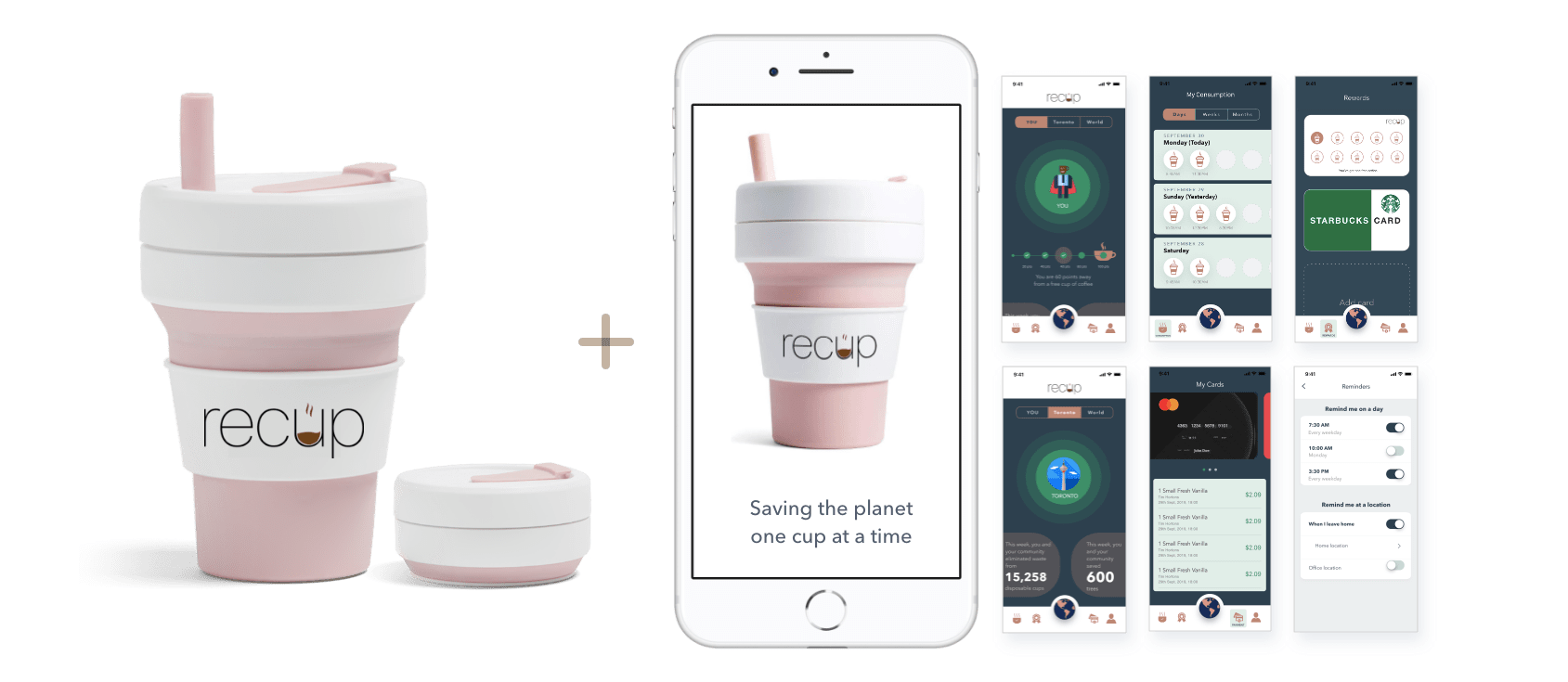
Recup
A reusable, collapsible, smart cup integrated with a mobile app.
Overview
Context
This project was done during a design jam co-organised by Adobe and IBM iX. We were tasked with coming up with an accessible, achievable, and measurable solution for tackling climate change at individual or group level.
The solution that my team came up with is called Recup. Recup aims to reduce the environmental damage done by millions of coffee cups disposed off every day.
Over a 100+ teams from 30+ universities across North America had registered for this design jam. My team stood 4th in the competition. The judges for the final round were Sabine Roehl- Chief Creative Officer from IBM iX, Gorham Palmer - Distinguished Designer from IBM, and Jessica Moon - Senior Design Manager from Adobe XD
Timeline
2 days, September 28th - 29th, 2019
Team
Priyaa Sathiyaseelan, Manali Desai, Shambhavi Tambulwadkar, Saaili Junarkar, Sneha Parekh
My Role
Product Designer & Team Leader
Host

Design Challenge Theme
The detailed challenge brief can be found here.
Our climate is changing, fast. To avoid catastrophic consequences to our health, economy and the biodiversity of our planet, we need to take action. Efforts to create a sustainable climate for the planet can feel like a daunting and inaccessible goal at an individual level. What if there was a way to contribute in small meaningful ways that could deliver a large impact?
Your mission is to develop a mobile app solution and may address one or all of these:
- Address a specific climate opportunity or challenge that can be impacted at a local level.
- Through connection and engagement, mobilize people to take action, making a positive and meaningful impact in their community.
- Leverage emerging technologies (AI, 5G, Cloud, Blockchain, etc.)
- Consider new business models to enable value exchange between parties.
Result
We stood 4th in this competition! :)
"Wonderful, wonderful presentation. I really liked the way you led in with the insights and presenting your research, and telling a story about the user journey."
- Sabine Roehl, Chief Creative Officer, IBM iX
"I really enjoyed the narrative upfront. Your presentation helped set up context and then you went beyond app design - you went into product design and service design, which is really interesting."
- Gorham Palmer, Distinguished Designer, IBM
Narrowing down
Choosing the wastage caused by the disposal of coffee-cups as our focus area
The design challenge theme was very open-ended. So we decided to start by choosing our focus area. We had a typical roundtable discussion, where each of us talked about a climate-change problem that they were passionate about. From excess food wastage happening at college cafeterias, to commercial buildings and universities leaving lights switched on for 24 hours a day, to the polyurethane plastic coating in coffee cups making them non-recyclable - we talked about these and many more similar issues. Soon we realised we were all over the place. With time being a very limited resource for this competition, we decided to narrow down and focus upon wastage caused by the disposal of coffee cups, primarily because -
- All five of us love coffee and have been guilty of increasing the world's plastic content from coffee cups.
- As we were constrained by time, we wanted to work on something for which we could have quick access to the user group for interviews, and prototype testing. Doing this project at the university campus gave us an abundance of access to student coffee lovers as well as cafeterias all across the campus.
Digging deep to understand the problem and the root causes
We conducted both primary and secondary research to better understand the problem space.
A. Coffee cups produce a massive scale global wastage
We started by researching the amount of wastage caused by disposable coffee-cups. Here's what we found:
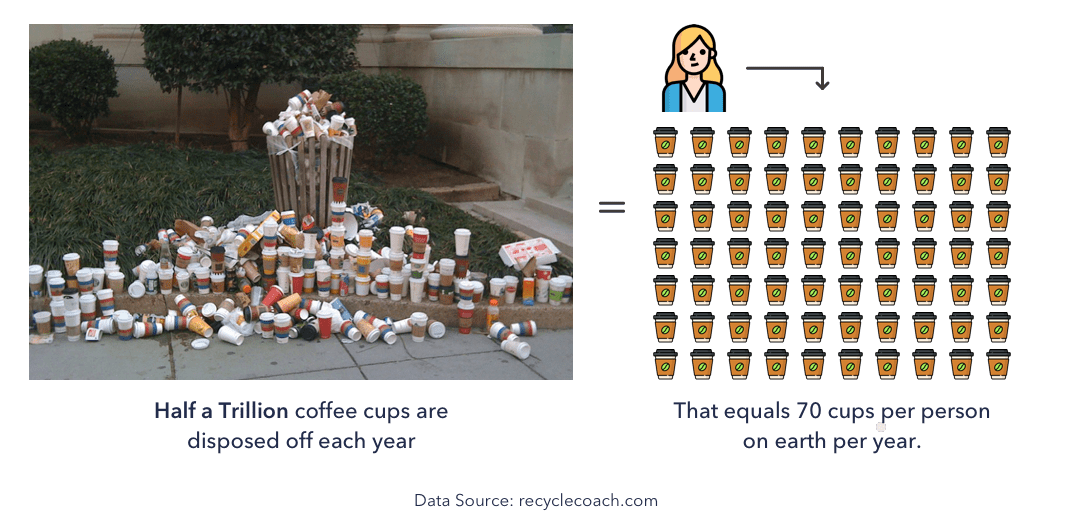
B. Coffee cups cannot be recycled because they’re coated in plastic — as little as five percent per cup.
Recycling (coffee cups) is a complex problem: historically, the problem with coffee cups on the market has been that they are made of two materials - virgin paper for the outer layer and a thin layer of plastic for the inner layer. That thin film of plastic is necessary to keep hot liquids from leaking. While it works brilliantly for the modern fast-paced coffee culture, it produces a lot of waste because these cups cannot be recycled."
- Malcolm Waugh
Retrieved from forbes.com, article titled 'This New Recycled Coffee Cup Wants To Be The Solution To The Global Waste Problem'
C. The disposal procedure for coffee-cups is a complicated process, and is often done wrong due to ignorance and lack of effort
A coffee cup has to be segregated into it's parts and each part goes into a separate bin. Not doing so leads to waste contamination
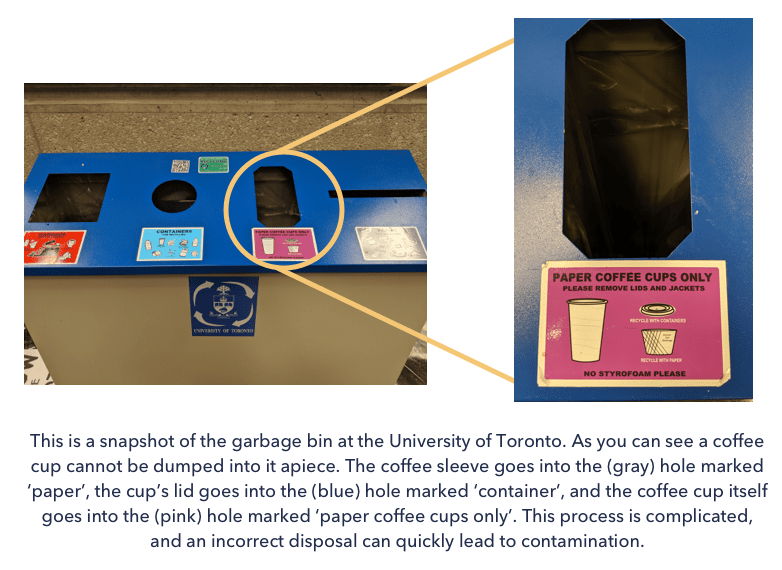
D. Understanding roadblocks that the existing solutions are facing
We wanted to finding out what solutions already exists in the market to tackle this problem. We also wanted to find out what big coffee chains like Starbucks and Tim Hortons were doing to reduce landfill wastage.
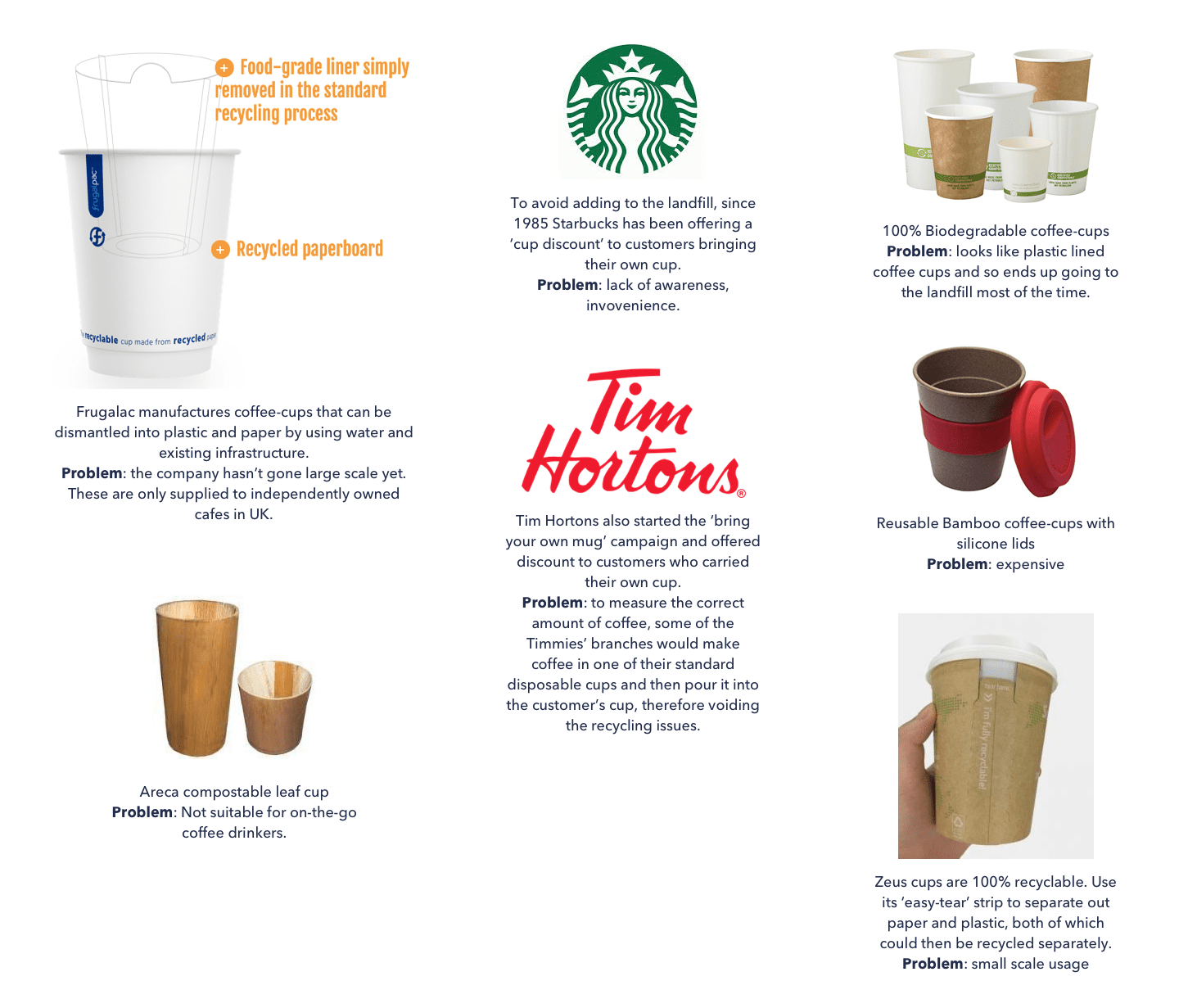
E. Even the environmentally conscious users showed resistance in carrying their own mugs to Startbucks and Tim Hortons
We really liked how big coffee chains like Starbucks and Tim Hortons encouraged users to carry their own mug and offered them discount as an incentive for doing so. We wanted to find out what people around had to say about this initiative. So we interviewed few university students. While all of them felt it's a great motive, and a majority of them were also fully aware about this program, here's what they had to say:
- “My mug is huge, it’s not easy to carry. And I don’t always carry a big bag.”
- “I usually forget my cup when I’m rushing to work.”
- I don't mind carrying a reusable mug. But the thing is I drink coffee three times a day. Washing is an issue and I cannot carry three mugs every day."
- “Sometimes leftover drops of coffee leak into my bag. With disposable cups, this doesn’t happen. They are convenient.”
Deriving insights from the research conducted
- Coffee cup envirommental wastage is caused due to excessive usage and improper disposal.
- Replacement for coffee cups exists in the market. But the problem with them is they are either expensive, or manufactured locally at small-scale. Also giant coffee corporations that cause the most environmental damage, are not using them.
- Giant coffee corporations already have programs incorporated into their existing infrastructure, encouraging customers to bring their own cup, and giving them discounts for doing so. However, these programs are not working. Upon interviewing customers we found several painpoints. So for our next stage, i.e. ideation, we decided to brainstorm ways to get past these painpoints and find ways to make the existing program a success.
Brainstorming the solution
Before starting to ideate, we created our persona, Katie, to have a shared understanding about who we are solving this problem for.

Next we brainstromed ideas and discussed pros and cons associated with them.
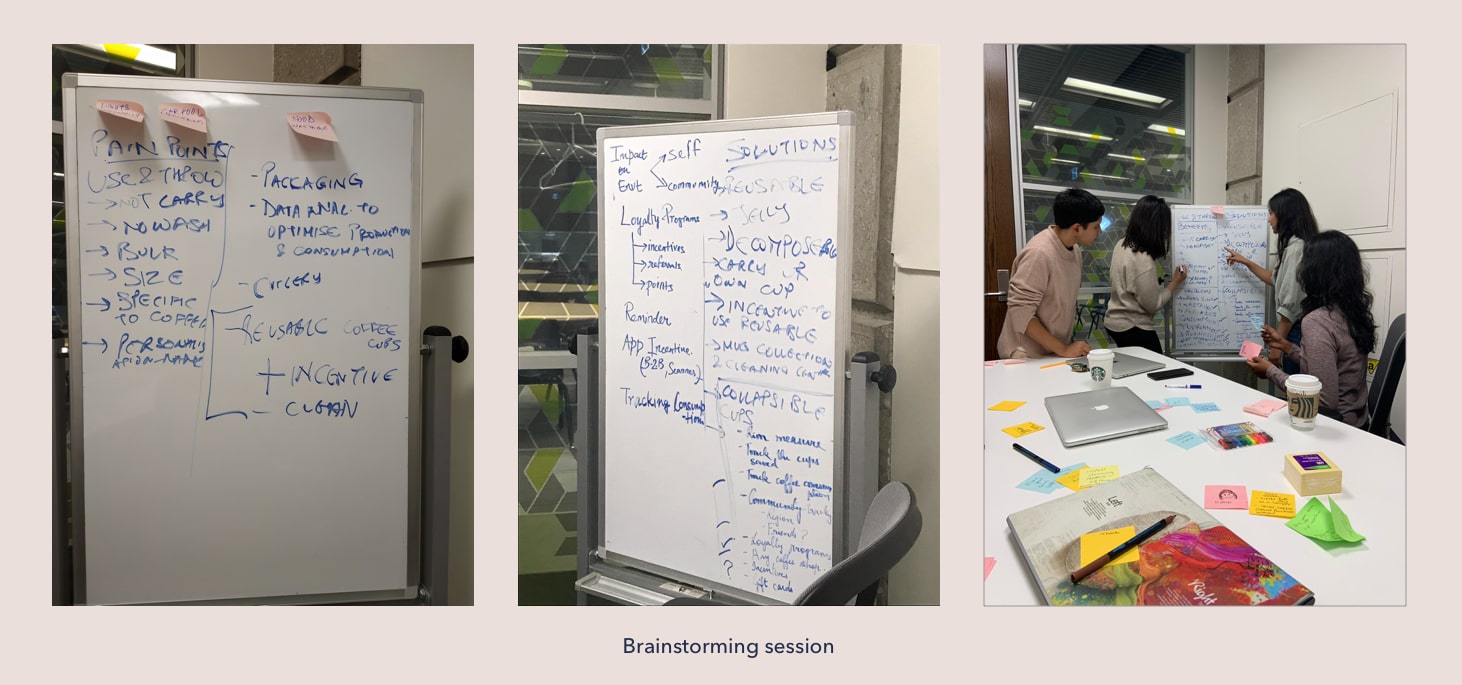
Top two ideas from the above brainstorming activities were -
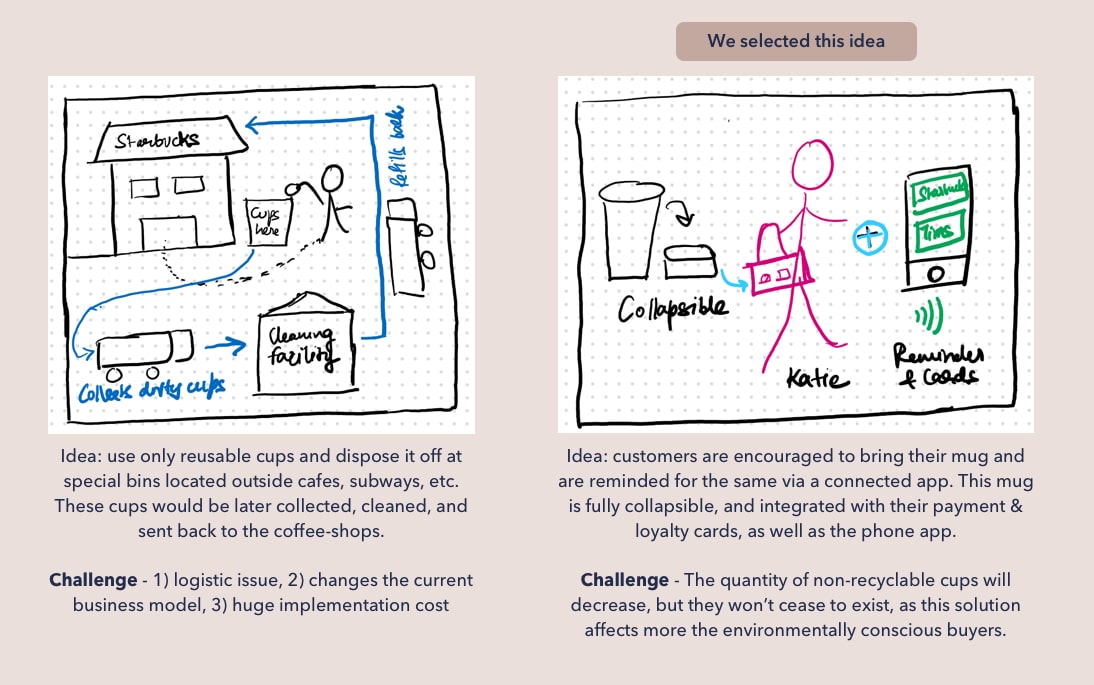
Final Solution
We were among the top 10 semifinalists who presented the solution to the judges.
The first segment of the video given below talks about the solution all the 10 semifinalists came up with, the second segment contains feedback given by the panelists to all 10 teams on their work, and the last segment announces the winner.
- Navigate to "42:00" using video controls to see our solution.
- Navigate to "1:42:05" using video controls to hear the 3 judges' feedback to our solution.
- Navigate to "1:54:37" using video controls to hear the host announe the winners.
Mockups
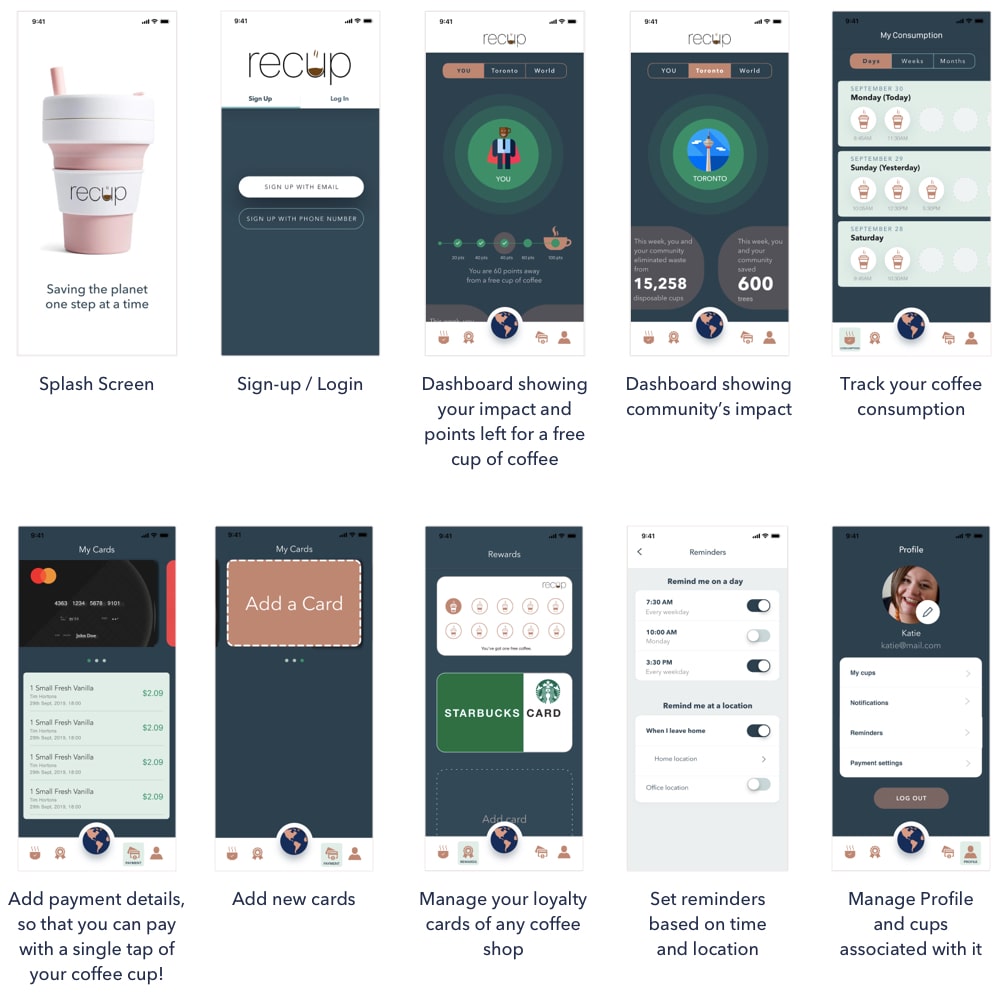
Reflection
Making quick, wise decisions
Throughout this case competition we were constrained for time. Deciding upon a topic for which we could have quick access to user groups for interviewing and testing, helped us immensely in getting quick feedback and improving the solution.
Collaboration is the key
Each one of us came with our unique set of strengths. Having identified this right from the beginning, helped us in working faster and better.
